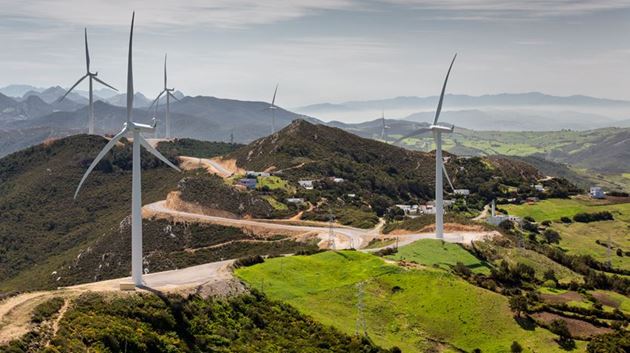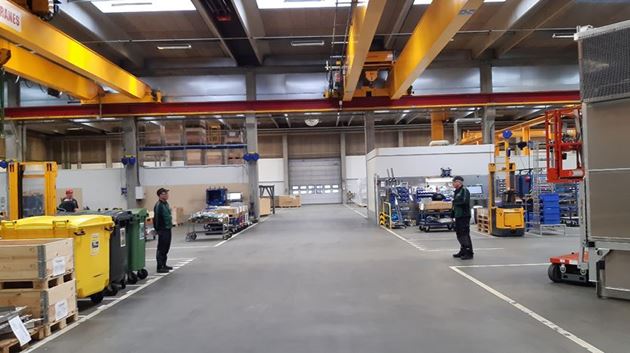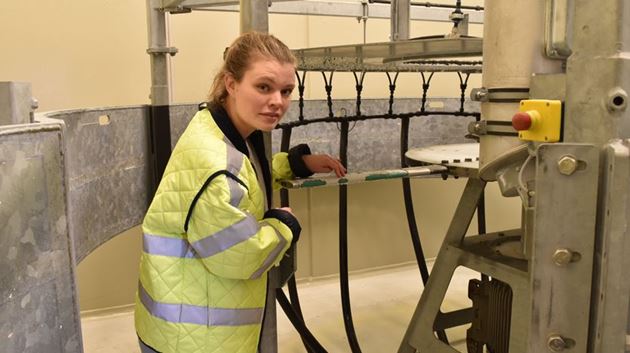
Brazil: wind is blowing in favor of renewable energy
Brazilian history and its natural environment have made hydroelectrical power the main energy source in the country. Wind power comes as a clean, complementary source to provide energy for the country’s economic development. It is the second most important for the country’s energy matrix, providing around 10% of the total. Siemens Gamesa is an important player in the Brazilian wind energy market, having installed close to 3.5 GW. Now, the Siemens Gamesa 5.X turbine platform, the most powerful turbine on the market, makes its debut in Latin America.
After the Second World War, when Brazil started its industrialization process it had the world’s third highest hydraulic potential, just behind Russia and China. It inspired the government to promote policies that encouraged the construction of hydroelectric power plants. With a relief characterized by plateaus, depressions and plains, as well as an abundant water resource, the five regions in which the territory is divided have adequate geographical conditions to develop hydro power. Today, water-generated energy provides 59.9% of the Brazilian electrical matrix.

“Since the first auction, the evolution of wind energy in the country has been impressive, reaching 10% of the Brazilian matrix in this period. It should also be noted that wind energy has become one of the most competitive generation sources, which helps in the sustainable growth of the Brazilian economy, generating employment and wealth in those areas of the country that need the most investment,” said Mauro Bittencourt, Siemens Gamesa Brazil Commercial and Marketing Director. In the last government auction, wind power was negotiated in R$ 189/MWh, while hydro power reached R$ 285/MWh. Also, “The wind energy sector hires currently more than 230 thousand people; considering that it still has potential to create over 200 thousand jobs by 2026, according to a study conducted by ABDI (Brazilian Association for Industrial Development),” explained Bittencourt.
Currently, according to Abeeólica (Brazilian Wind Energy Association), the country has 619 wind farms installed, generating more than 15 GW. Given the Brazilian wind potential, it is expected that the national market will contract 3 GW of wind energy capacity annually over the next ten years. Roberto Prida, Siemens Gamesa Brazil Managing Director, explains that Brazil still has an outstanding growth potential. “Wind is the fastest growing energy resource in the Brazilian energy matrix. The country has one of the best quality onshore wind resources in the world, which allows the generation of energy at a competitive level, and with seasonality complementary to hydroelectric energy, that means we can have wind power during the dry seasons, when there is not enough water to move hydro turbines.”

During the 10 years that Siemens Gamesa assembled nacelles and hubs in Brazil, it has worked to strengthen its supply chain in order to have the best local manufacturing conditions. Supplier capacity development has been a priority since 2011, when the factory started producing G87/G90 2.0-MW hubs using blade bearings, nose cones and hydraulic components that were certified in compliance with local content regulations. Over the
Over time, many turbine models were assembled in Camaçari, such as G97, SG 2.0-114 and SG 2.1-114, SG 2.6-114, and SG 3.4-132, always following nationalization requirements. Since the manufacturing facility was opened in 2011, it has produced over 830 nacelles and 1,470 hubs. Today, more than 200 employees work in the Camaçari plant.
The latest milestone for Siemens Gamesa in Brazil is the third global order for the company’s next generation platform, the Siemens Gamesa 5.X. The benchmark technology will arrive in the country for an order to supply 52 turbines SG 5.8-170 to the global power company AES.

The competitiveness of the Platform 5.X will unquestionably be increased for the company’s strong local history. “Over the last decade, Siemens Gamesa has shown an unmatched commitment towards the Brazilian market, bringing its latest technologies and investing heavily in localizing production and creating jobs,” stated Alfonso Faubel, CEO of Siemens Gamesa’s Onshore business unit. The company will adapt the Camaçari plant to assemble the new turbine model.



